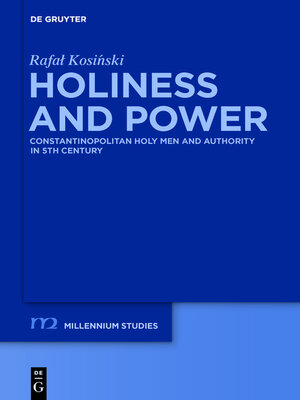Holiness and Power
ebook ∣ Constantinopolitan Holy Men and Authority in the 5th Century · Millennium-Studien / Millennium Studies
By Rafal Kosinski

Sign up to save your library
With an OverDrive account, you can save your favorite libraries for at-a-glance information about availability. Find out more about OverDrive accounts.
Find this title in Libby, the library reading app by OverDrive.



Search for a digital library with this title
Title found at these libraries:
| Library Name | Distance |
|---|---|
| Loading... |
The book examines the origins, development, and the role of the monastic movement in the capital of Byzantium. It was in the 5th century that a certain pattern of the functioning of monastic circles evolved within the specific framework of the ecclesiastical structures of Constantinople, which was a political and ecclesiastical centre of the Eastern Roman Empire. The bulk of the book is devoted to an analysis of the written accounts of the lives of the four Constantinopolitan holy men: Hypatios, Alexander Akoimetos, Daniel the Stylite, and Markellos Akoimetos. The analysis proves that the model of relationship between the holy man and the secular authority would change less than the one between the holy man and the ecclesiastical authority. The authors often cast the holy man in the role of "father", who was a kind of patron to the Emperor and his apparatus of government. On the other hand, one can observe a gradual change of the model of the relationship between the holy man and the ecclesiastical authorities from the initial opposition to a fully harmonious partnership. All the "Lives" focus on the idea of the third kind of authority existing alongside the two others; this type of authority is called religious and charismatic.







